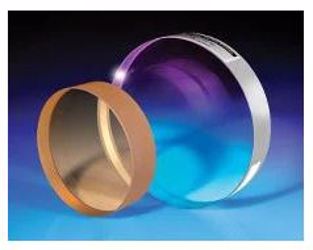Optical Flats

PRECISION OPTICAL FLATS
An optical flat is a precisely polished flat surface, used as a reference against which the flatness of an unknown surface may be compared. Edmund Optics offers both single surface and dual surface optical flats in either ZERODUR® or Fused Silica. The flatness of an optical flat is measured in fractions of a reference wavelength, 632.8nm. A λ/20 flat will have a maximum peak to valley deviation of 632.8/20 or 31.64nm. We offer several levels of flatness for our single surface flats: λ/4, λ/10, and λ/20. For our dual surface flats, ¼, 1/10 and 1/20 flatness are available.
WHAT AN OPTICAL FLAT SHOWS
When an optical flat's polished surface is placed in contact with a surface to be tested, dark and light bands will be formed when viewed with monochromatic light. These bands are known as interference fringes and their shape gives a visual representation of the flatness of the surface being tested. The surface flatness is indicated by the amount of curve and spacing between the interference fringes. Straight, parallel, and evenly spaced interference fringes indicate that the work surface flatness is equal to or higher than that of the reference surface.
Get unlimited access to:
Enter your credentials below to log in. Not yet a member of Photonics Online? Subscribe today.
